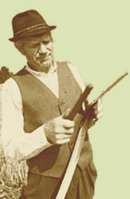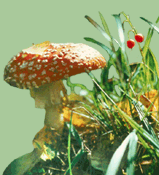From hairy mammoth to American mink, or the history of Estonian theriofauna
Lembi Lõugas describes the journey of the first animals and people who settled Estonia after the retreat of the continental ice sheet. She gives an idea of the development of the current theriofauna. This development has lasted for about 14 000 years. Many of the animals once present here are now presented only by bones hidden deep in the ground. Most of the findings of vertebrates bones date back to the period of last 10 000 years, the Holocene. However, there are indications of hairy mammoth, hairy rhinoceros and aurochs being common here about 4050 thousand years ago, during the interglacial periods. Most likely the first animals of the present Estonian fauna were beaver, wolf, elk, brown bear, fox, lynx, European gray hare and otter. The oldest settlements of humans in Pulli, West-Estonia, date back to 11 000 10 600 years ago. Most of the domestic animals were brought here through trade, the first of them being ox, pig, goat and sheep.
The molecular view of biological diversity
Tanel Tenson and Veljo Kisand state that considering the importance of microorganisms in matter cycles, their very wide dispersal and huge biomass, our knowledge of microbe diversity is still very limited. Most of the well-known organisms, such as plants, fungi and multicellular animals, belonging to one branch of the Eucaryotes, are very closely related, but form only a small part of the evolution tree. Molecular biology, now increasingly substituting the classical research methods, is a useful tool in extending our understanding of the abundance of microorganisms, of the kinship relations and the universal evolution tree.
Self-made bog á la Dutch
Drawing on the Dutch experience, Juhan Javoi demonstrates that the restoration of once destroyed nature is extremely expensive, labour-consuming and almost entirely unsuccessful. The Dutch have struggled with nature for ages, trying to break the natural irregularity. As a result, there is almost no nature left. Past few decades have, however, witnessed the wish to get nature back. There are two ways to achieve that: nature development and nature restoration. The combination of the two methods have been practiced in Dutch ex-bog areas. The article presents an overview of the methods and practices used, and explains the reasons for failure.
Eesti Loodus enquires
Kaili Viilma tells about the activities of the Metsahoiu sihtasutus (Forest Protection Foundation) to protect forest.
Kalle Olli discusses the nuisance of the past summer the blue-green algae.
The much-spoken green energy is not always green in its essence
Fish biologists Jaak Tambets, Rein Järvekülg and Meelis Tambets continue the issue of hydro energy. They stress that the damming of rivers is risky and instead of green energy we get black energy.
Trips on the Elva-Vitipalu landscape protection area
Gea Järvela invites the reader to the hiking paths along the coasts of the River Elva and the streams of Laguja, Illi, Varesepalu and Ilusa. The five hiking routes of the protected area are described and a detailed map of the area and the paths is given.
European rarities in Estonia
Riinu Rannap introduces natterjack toad, whose number has decreased everywhere in Europe, including the island of Manilaid, which just two decades ago had one of the biggest toad colonies of the former Soviet Union. In Estonia there are still 11 colonies, and in 2000 the restoration of suitable habitats started.
Interview: Man has to live together with bacteria
Toomas Kukk has interviewed Marika Mikelsaar, professor of microbiology.
Essay
Tõnu Ojas insight into the peaceful hoarfrost period.
Places dont flee: biological encounters near Rome
Kalevi Kull has spent some time near Rome where he has encountered people and places with history. The Biological Center of Naples has hosted the majority of Europes famous biologists, including the Estonian-born Jakob von Uexküll. The well-known biologist spent his last years on Capri Island.
Practical tips
Tiina Talvi describes the delicate art of collecting snails. She introduces two main methods for picking snails from nature and makes suggestions for sorting the samples. Recommendations for organizing ones snail collection are given as well.
| 

![[IN ENGLISH]](images/gb.gif)





